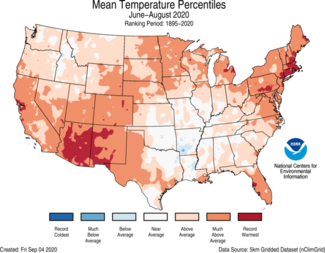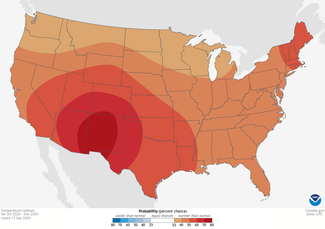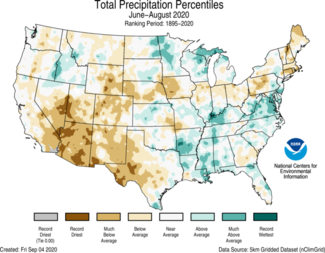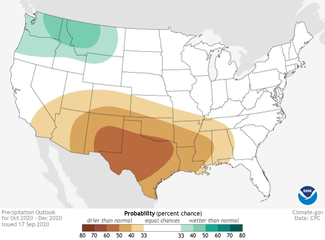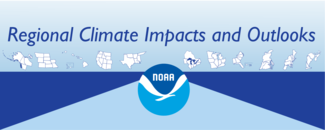
NOAA and its partners have released the latest Regional Climate Impacts and Outlooks, which recap summer conditions and provide insight into what might be expected this autumn.
Summer Temperature Recap
During meteorological summer (June–August), the average temperature for the Lower 48 was 73.6°F, 2.2°F above average, ranking fourth warmest in the historical record. Above- to much-above-average summer temperatures spanned most of the contiguous with pockets of near-average and below-average temperatures observed in the Lower Mississippi Valley. Many stations across the Southwest, Southeast, Mid-Atlantic and Northeast recorded their warmest summer on record. Arizona, Connecticut, Rhode Island and Massachusetts each reported their warmest June–August on record. Eleven additional states had a top-5 warmest summer. No state ranked below average for the summer season.
The Alaska statewide average temperature for the summer was 52.0°F, 1.5°F above average and ranked in the warmest one-third of the 96-year record. Temperatures were warmer than average across central, western, southwestern, and southcentral Alaska, while much of the North Slope and eastern Interior were near average. Below-average temperatures were present across much of the Panhandle.
Autumn Temperature Outlook
The October-November-December 2020 temperature outlook favors above-normal temperatures for a majority of the contiguous United States, with the largest probabilities (greater than 70 percent) forecast across parts of the Southwest along with northern Alaska.
Summer Precipitation Recap
The summer precipitation total for the U.S. was 7.99 inches, 0.33 inch below average, ranking in the driest third of the historical record. Above-average precipitation was observed in parts of the Northwest, the Great Lakes, and from the lower Mississippi River Valley to the Mid-Atlantic, and Virginia had its 10th-wettest summer on record. Below-average precipitation was observed across much of the West, Rockies, Deep South, and from portions of the central Plains to the Northeast. Arizona had its driest summer on record receiving about 33 percent of its seasonal average. New Mexico, Colorado, California, and Rhode Island each had a top-10 driest summer.
In Alaska, Ketchikan reported its wettest summer on record with nearly four feet of rainfall. Juneau set a record for the most number of summer days with measurable rainfall—68. The former record of 67 days was reported in 2006. In contrast, Kotzebue had its lowest summer rainfall observed since 1977.
Autumn Precipitation Outlook
The October-November-December 2020 precipitation outlook indicates enhanced probabilities of below-normal precipitation amounts from southern California, across the Southwest, southern Great Plains, and Lower Mississippi Valley to the Southeast. Above-normal precipitation is most likely across Washington, the northern Rockies, Dakotas, and western and northern mainland Alaska.
Impacts and Outlooks for Your Region
Get more details for your region in the September 2020 climate impacts and outlooks summaries:
- Alaska and Northwestern Canada Region
- Chesapeake Bay Region
- Northeast Region
- Great Lakes Region
- Gulf of Maine Region
- Midwest Region
- Missouri River Basin Region
- Pacific Region
- Southeast Region
- Southern Region
- Western Region
Creating These Quarterly Summaries
NOAA’s Regional Climate Services lead the production of these quarterly summaries of climate impacts and outlooks for various regions of the United States as well as parts of Canada along the border. This effort, which began in 2012, now includes as many as 11 unique regional products, all produced collaboratively with partner organizations.
You can access all of the Climate Impacts and Outlooks summaries as well as additional reports and assessments through the U.S. Drought Portal Reports web page at Drought.gov.

